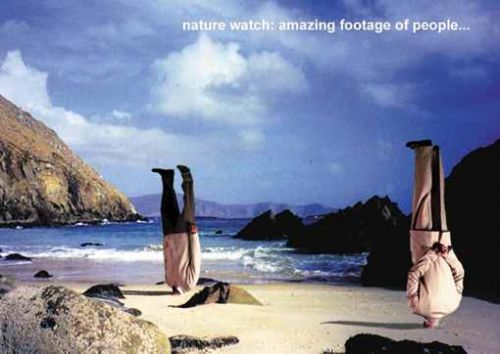Journalists ignore life's beginnings
 Two major newspapers published front-page stories yesterday about a proposed Bush Administration rule that would seek to protect health-care workers to not provide abortions, or contraceptive devices they regard as tantamount to abortion. The proposal would deny federal funding to any hospital, clinic, health plan, or other entity that does not give employees a right to refuse to participate on conscience grounds. In The Wall Street Journal, reporter Stephanie Simon focused on the potentially far-reaching effects of the rule. Her lede began this way:
Two major newspapers published front-page stories yesterday about a proposed Bush Administration rule that would seek to protect health-care workers to not provide abortions, or contraceptive devices they regard as tantamount to abortion. The proposal would deny federal funding to any hospital, clinic, health plan, or other entity that does not give employees a right to refuse to participate on conscience grounds. In The Wall Street Journal, reporter Stephanie Simon focused on the potentially far-reaching effects of the rule. Her lede began this way:
Set aside the fraught question of when human life begins. The new debate: When does pregnancy begin?
The Bush Administration has ignited a furor with a proposed definition of pregnancy that has the effect of classifying some of the most widely used methods of contraception as abortion.
A draft regulation, still being revised and debated, treats most birth-control pills and intrauterine devices as abortion because they can work by preventing fertilized eggs from implanting in the uterus. The regulation considers that destroying "the life of a human being."
Later, Simon elaborated about the politics of the proposed rule as well as that of other similar state measures:
With its expansive definitions, the draft bolsters a key goal of the religious right: to give single-cell fertilized eggs full rights by defining them as legal people -- or, as some activists put it, "the tiniest boys and girls."
As long as Roe v. Wade remains in effect and abortion remains legal, that goal can't be fully realized. But in recent years, abortion opponents have scored notable successes. For instance: Several states now define a fertilized egg as a legal person -- an "unborn child" -- for purposes of fetal homicide laws, which allow criminal prosecution when a woman miscarries as a result of an assault.
In South Dakota, abortion doctors must tell patients -- whatever their stage of pregnancy -- that they will be "terminating the life of a whole, separate, unique, living human being" with whom they have an "existing relationship." In Colorado, voters this fall will weigh a state constitutional amendment that would confer full personhood on fertilized eggs, as well as embryos and fetuses. And embryonic stem-cell research is restricted through a variety of state and federal policies.
In The Washington Post, reporter Rob Stein also focused on the political and legal effects of the rule:
Because of its wide scope and because it would -- apparently for the first time -- define abortion in a federal regulation as anything that affects a fertilized egg, the regulation could raise questions about a broad spectrum of scientific research and care, critics say.
Simon and Stein could not ignore writing about the rule's political and legal implications. But their exclusive focus on them gave readers an incomplete and misleading picture. They glossed over the biological aspects of the rule. And Simon used scare quotes to describe human biology-- "the life of the human being" and "unborn child."
As I wrote last December, embryologists and biologists have reached a rough consensus about when human life begins. In the vast majority of cases, an individual human life begins at the end of fertilization or conception.
Take the definition in Brittanica Concise Encyclopedia:
In humans, the organism is called an embryo for the first seven or eight weeks after conception, after which it is called a fetus.
Or consider the definition in Columbia Encyclopedia:
Among humans, the developing young is known as an embryo until eight weeks following conception, after which time it is described, until birth, as a fetus.
Not all authorities agree with this precise definition. For example, the American Heritage Dictionary and Oxford University define an embryo as that which begins at implantation. Yet this definition relies on an exception to the rule: the case of twins or triplets, etc. In those cases, the first human life begins at fertilization, and the second when the embryo splits or divides. Yet the life is undoubtedly human.
It's fine for reporters to write about the law and politics. But when it comes to bio-ethical issues, they also need to write about the biology. Avoiding the topic is simply a journalistic sin of omission.